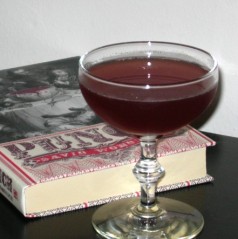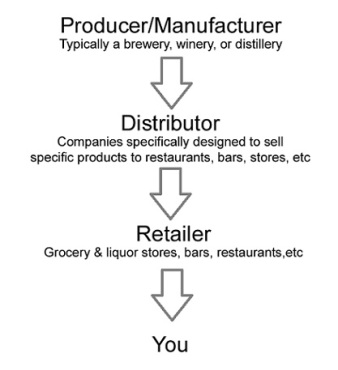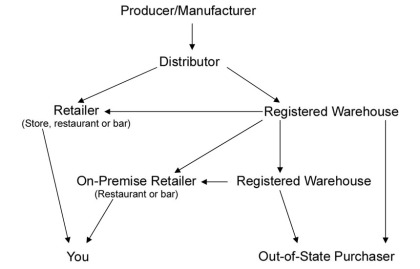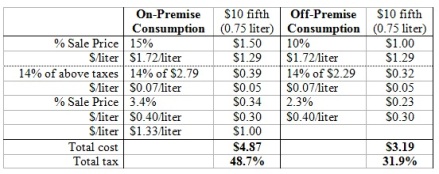Bayberry Punch
November 15, 2012
 1 oz Bayberry infused Plymouth
1 oz Bayberry infused Plymouth- 1 oz Barbancourt 8
- 3/4 oz lemon juice
- 1/2 oz simple syrup
- 3 dashes Earl Grey bitters
I came home with a strong hankering for the savory-berry goodness of bayberry. It stands among the more useable gin infusions I’ve made, perhaps because it adds only a moderate amount of sweetness, thereby cooperating better with the gin. The resulting infusion has a surprising funky note, so of course, I thought to pair it with a slightly funky rum. I knew I would be using lemon juice and syrup to create a lighter drink – might as well go for the punch varietal and add earl grey bitters for the spice note. With that, a flavored syrup would make it too complex to hold up as a punch, therefore just simple this time.
In all, it is a rather tasty drink – the sweet/savory bayberry hits the palate first, promptly followed by lemon and the funky kick of the rum. The bitters don’t play a large role, and I think they could even be upped just a bit, but I feel like the complexity is pretty close to perfect to keep a person interested in a large bowl of this one.
Bayberry-Plymouth Infusion:
- 7 oz (by weight) bayberries, cleaned
- 10 oz (volume) Plymouth
Soak the berries in the gin for 1 week, then strain and bottle
Earl Grey Bitters:
- 1 tsp earl grey tea
- 2 oz Plymouth
- 2 oz 151 pr vodka
Infuse the tea for 1 week, then strain. Blend with basic 151 pr vodka infusions of the following: black walnut leaf, milk thistle, and fringe tree bark. My proportions were 9 parts tea infusion to 1 part each of the above bittering agents.
Bein’ Green
October 15, 2012

Well, hello there strangers! Like what seems to be 95% of the cocktail blogging scene, I have been taking a rather guilty, rather extended break from this site. And so – just in time for October’s Mixology Monday, I’m back! This month’s challenge is being hosted by Ed over at Wordsmithing Pantagruel, and reads as follows:
“With the warm days of summer now fading off into the distance in our rear view mirrors, let’s pay one last tribute to the greens of summer before the frosts come and our outdoor herb gardens give up the ghost for the winter. For our theme for this month, I have chosen: (it’s not easy) “Bein’ Green.” (Perchance due in no small part to my predilection for Green Chartreuse.) I’m giving you a wide berth on this one, anything using a green ingredient is fair play. There’s not only the aforementioned Chartreuse; how about Absinthe Verte, aka the green fairy. Or Midori, that stuff is pretty damn green. Crème de menthe? Why not? Douglas Fir eau de vie? Bring it! Apple schnapps? Uh…well…it is green. I suppose if you want to try to convince me it makes something good you can have at it. But it doesn’t have to be the liquor. Limes are green. So is green tea. Don’t forget the herb garden: mint, basil, cilantro, you name it – all fair game. There’s also the veritable cornucopia from the farmers market: green apples, grapes, peppers, olives, celery, cucumbers…you get the idea. Like I said, wide berth. Base, mixer, and or garnish; if it’s green it’s good. Surprise me. Use at least one, but the more the merrier.”
This seemed like the perfect excuse to pull out one of my particularly-challenging-but-tasty concoctions: a cilantro-Batavia-Arrack infusion. Here we go:
The Herbalist
1.5 oz cilantro-Batavia-Arrack infusion ¹
0.5 oz London Dry gin [BigGin]
0.25 oz basil turbinado syrup ²
3 d Chartreuse Élixir Végétal
Basil leaf garnish
The infusion has a lot of intense flavor to work with; the smoky, funky arrack notes and the woody-citrusy cilantro will dominate almost everything I have tried pairing them with. However, Big Gin is an equally intense gin with heavy pepper and citrus notes (and also “green” in that it is a local spirit). It not only holds its own, but can actually take over in the face of the arrack. I used the basil syrup to sweeten and smooth the intense flavors without losing the botanical focus, and of course, no highly botanical green drink would be complete without a few dashes of Élixir Végétal and a leafy green garnish to tie it all together!
This is not a cocktail I’d want to drink every day, but it has a fascinating depth to it despite being a simple stirred drink. The multitude of flavors blend together well, resulting in a distinct yet balanced libation, while leaving you with the impression that you just encountered a most striking form of pesto that isn’t quite pesto. For my personal taste, I would reduce the syrup to a barspoon, as I tend to like my drinks overly-bittered and under-sweetened by standard tastes.
¹ Cilantro Batavia Arrack Infusion
Fill an 8 oz jar halfway with cilantro leaves, gently tamped down. Top with 4 oz Batavia-Arrack. Age for 2 days, strain through a coffee filter, and bottle. Lifespan is indefinite, as is the stunning green color, if kept in a cool, dark place such as the recesses of a liquor cabinet.
² Basil Syrup
Cook a 1:1 ratio turbinado simple syrup with 1/2 c water and 1/2 c sugar. Immediately after removing from heat, pour into a jar with 1 oz (by weight) fresh basil leaves. Allow them to steep for approximately 1 hour in the closed container. Strain through cheesecloth or fine mesh and bottle. The syrup should be viable for several months up to (at best) a year if kept refrigerated well, though it is best used within the month.
This is a series, check out Part I, Part II, and Part III if you haven’t seen them yet!
DISCLAIMER: I am NOT an expert in either law or the liquor industry. Anything I write here could be inaccurate, especially due to the varied and changing interpretations of the law as it goes into effect. I will try my best to get things right, and make corrections as need-be, but I make no guarantees as to the accuracy of what I write here.
Resources:
- The complete 60-page text of the Initiative 1183 (or the 32-page easy-to-read, long-to-load version)
- The current law
- The Washington State Liquor Control Board’s (WSLCB) statement and transition overview
Licenses:
Unless noted otherwise, all license fees are charged on a yearly basis. (These are only the licenses relevant to the changes in 1183. For a full list, see RCW 66.24)
- Spirits Distributor — a person/company who “buys spirits from a domestic distiller, manufacturer, supplier, spirits distributor, or spirits importer, or who acquires foreign-produced spirits from a source outside of the United States, for the purpose of reselling the same . . . or who represents such distiller as agent.”
- Fee = $1320 + 10% of sales revenue for 2012-14 or 5% of sales revenue after 2013. (If total state tax revenues from spirits distributors are less than $150m by March 31st, 2013, each distributor faces an additional fee based on sales to meet this value owed to the state.)
- Spirits Importer — a person/company “who buys distilled spirits from a distiller outside the state of Washington and imports such spirits into the state for sale or export.”
- Fee = $600
- Representative — a person/company approved by a “holder of a certificate of approval, a licensed beer distributor, a licensed domestic brewer, a licensed beer importer, a licensed microbrewer, a licensed domestic winery, a licensed wine importer, a licensed wine distributor, or by a distiller, manufacturer, importer, or distributor of spirits, or of foreign-produced beer or wine” to “canvass for, solicit, receive, or take orders for the purchase or sale of liquor”
- Fee = $25
- Craft Distiller — A distiller who produces sixty thousand gallons of spirits or less. At least half of the raw materials used must be grown in Washington. A craft distillery can sell up to 2 liters a day per person of its own product.
- Fee = $100
- Certificate of Approval — a document permitting a winery/distillery to sell to distributors, importers, or retailers. A direct shipment endorsement is available, which allows the winery/distillery to act as distributor for its product.
- Fee = Not Stated.
- Spirits Retailer –A business of at least 10,000 square feet of retail space within a single structure (including storerooms and other interior auxiliary areas). Licensees must manage inventory, train employees, supervise employees, and provide measures to prevent theft of liquor by underage or inebriated persons.
- Fee = $166
- Grocery Store — A business with a minimum of $3000 of “food products for human consumption” (not including soda or alcohol of any form) may sell wine, beer, or “strong beer” at retail for consumption off-premises. (Note: this is the loophole for mini-marts. Any mini-mart that already has a grocery store license that allows them to sell wine or beer will be “deemed to be premises ‘now licensed’ under RCW 66.24.010(9)(a)”.)
- Fee = $150
- Wine retailer reseller endorsement — Applies to grocery store licenses, and allows them to sell wine (at retail) to retailers licensed to sell wine for on-premise consumption, for resale at their licensed premises according to the terms of the license. Single sales are limited to 24 liters, unless the buyer is the manager of a contract-operated liquor store.
- Fee = $166
Timeline:
- December 8th, 2011 –
- The new law goes into effect. Any suits against potentially illegal legislation in the text of 1183 must be brought to court by this date – I don’t know if they have to be settled or not, as my knowledge of this process is fuzzy. Some concerns that may be brought up: the 3-tier system is partially legislated by the federal government, and interstate shipping is fully legislated by the federal government, so the state may not have power to change these.
- WSLCB starts drafting up the new system.
- Craft distilleries can start selling directly to restaurants and bars (on-premise retailers).
- January 1, 2012 –
- WSLCB must process all applications for spirits distributors.
- January 2012 –
- WSLCB will start disposing of property and assets.
- Some stores could be closed as early as Jan. 1st, though it seems unlikely.
- March 1st, 2012 –
- Licensed spirits distributors may start selling in Washington.
- April 1st, 2012 –
- WSLCB must process all applications for spirits retailers.
- June 1st, 2012 –
- License retailers may start selling in Washington.
- All state liquor stores must be closed, and liquor inventory must be either sold or returned to the manufacturer.
- June 1st, 2013 –
- All WSLCB assets must be sold (liquor stores, warehouses, furnishings, etc). Department of Revenue takes over any unsold assets.
Next Up:
State & Contract Liquor Store Transition
Initiative 1183 – Privatizing the Liquor Industry – Part III – Taxes
December 4, 2011
This is a series, check out Part I and Part II if you haven’t seen them yet!
DISCLAIMER: I am NOT an expert in either law or the liquor industry. Anything I write here could be inaccurate, especially due to the varied and changing interpretations of the law as it goes into effect. I will try my best to get things right, and make corrections as need-be, but I make no guarantees as to the accuracy of what I write here.
Resources:
- The complete 60-page text of the Initiative 1183 (or the 32-page easy-to-read, long-to-load version)
- The current law
- The Washington State Liquor Control Board’s (WSLCB) statement and transition overview
The Current Tax System:
We all know of the dreaded “sin tax”. Those of us in Washington truly hate it, as it tacks on an additional (approximate) 50% onto the retail bottle price. Most of this money is marked to go to the State General Fund, and the rest to the Liquor Revolving Fund. To see the specifics, visit RCW 66.08.190 (that is way beyond my scope, as 1183 doesn’t touch it). Anyway, there are two incomes on the Liquor Revolving Fund: yearly licensing fees and sales tax. We’ll get into the license fees in the licenses section, but we’ll tackle the sales tax here. There are 3 forms of sales tax a bottle of liquor: a percentage of the sale price, a dollar-rate per liter, and a percentage of the already-calculated taxes (yes, that last one makes me cringe too). Tax rates are different based on whether the consumption of a bottle is on-premise or off-premise (think restaurant/bar vs store purchase for home use).
What Changes:
Alright, so we know what the taxes are. Comparing the current law and 1183, the numbers are exactly the same even. So far so good. The problem, as I see it, is that instead of dealing with the state’s 51.9% markup, we will now see a tax on the distributor. For the first two years, it is 10% (and in the first year, that amount must reach a minimum of $150 million, to be divided by proportion of sales between distributors if it is greater than 10% overall sales tax), and then drops to 5%. We don’t necessarily know how that 51.9% markup was used, so if it was more than sufficient to cover the costs of running stores and distribution centers, the state may see a decrease in income. Regardless, they were taxing that 1.519% value on a bottle, so if prices on liquor go down, they could still be hurting for cash if enough sales aren’t made.
Next Up:
Licenses & Timeline
This is a series, check out Part I if you haven’t seen it yet!
DISCLAIMER: I am NOT an expert in either law or the liquor industry. Anything I write here could be inaccurate, especially due to the varied and changing interpretations of the law as it goes into effect. I will try my best to get things right, and make corrections as need-be, but I make no guarantees as to the accuracy of what I write here.
Resources:
- The complete 60-page text of the Initiative 1183 (or the 32-page easy-to-read, long-to-load version)
- The current law
- The Washington State Liquor Control Board’s (WSLCB) statement and transition overview
The Current 3-Tier System:
Currently, the country operates on a “3-tier system”. The gist of this is that an alcohol producer cannot sell directly to the public (except in special cases such as brewery/winery/distillery gift shops and bars, which we will talk about another day). See the following diagram:
 This means that there is a built-in middle-man in almost every alcohol purchase you make. Obviously, this goes against the ideal of a lot of companies that emphasize low prices – they’d love to get that product to you at “wholesale” costs and take that middle-man’s profit margin for themselves. Not to say that I don’t want lower prices; I think that the 3-tier system is broken. I just don’t know that 1183 fixes it (or even helps us get better prices).
This means that there is a built-in middle-man in almost every alcohol purchase you make. Obviously, this goes against the ideal of a lot of companies that emphasize low prices – they’d love to get that product to you at “wholesale” costs and take that middle-man’s profit margin for themselves. Not to say that I don’t want lower prices; I think that the 3-tier system is broken. I just don’t know that 1183 fixes it (or even helps us get better prices).
The details: right now only the state (or state-selected contractor) is allowed to act as the final distributor (for example, a restaurant cannot buy liquor directly from a sales representative, but instead has to ask the state to order that product through their distributor, and then buy it from the state). Only the state can warehouse liquor for future sale.
The New 3.5-Tier? System:
1183 passes, and now things get muddled. Look at that pretty diagram up there again. We don’t have to worry about warehouses – only the state can sell from them. Suddenly, warehouses are a big deal, as are things called “endorsements”. Take a gander: Yikes! Ok, let’s say a distributor did all his/her distribute-y things, and a case of sumpn’-sumpn’ shows up at the doorstep of your friendly local grocer (now legally authorized to sell liquor). Said grocer has some options: he can
Yikes! Ok, let’s say a distributor did all his/her distribute-y things, and a case of sumpn’-sumpn’ shows up at the doorstep of your friendly local grocer (now legally authorized to sell liquor). Said grocer has some options: he can
- sell it to you at the retail tax rate, or he can
- tell the delivery guy “no, no, it goes to our warehouse down the street!”, at which point, it can
- be delivered to another store in the chain that is authorized to sell liquor, it can
- be sold to that restaurant or bar down the street (if the case is wine and the grocer has a “wine retailer reseller endorsement”, or if the grocer is operating under a spirits retail license instead of a grocery store license), it can
- be sold to another warehouse registered by a licensed seller, or it can even
- be sold to a legal purchaser out-of-state.
To make it even more confusing, every time a retailer sells to another retailer for resale (not consumption), the first retailer is considered a distributor. Why? An item can only be taxed at the distributor rate once (this guarantees that a case that makes the circuit among 50 sellers is taxed pretty much the same as a case that goes from producer-distributor-retailer-you directly). [See sections 103 and 104 of 1183 to see this for yourself.] What are the perks of this? Your favorite savvy local businesses can form a group to warehouse their own stock, allowing them to make (or split) bulk purchases and save money. Warehouses are legal for “associations, cooperatives, or comparable groups of retailers”, so long as there is “at least one retailer licensed to sell spirits” [103.3d].
This is a mess, and it actually increases the middle-men! Why would we pass this?! Well, because Costco threw a lot of bucks at it. And they did it because they plan on being that first retailer and registered warehouse that sells to other retailers (like all those mini-marts that just might have their loophole to get in on selling liquor – we’ll discuss that later). Chances are, Costco will probably go for a distributor license in some way or other as well, so they can distribute their private label, removing the middle-man on some products and winning their customers with bottles that are a few bucks cheaper. Meanwhile, we can expect prices to go up in boutique locations that don’t deal directly with distributors because they don’t do bulk business. (Many distributors have something called a “broken case fee” that can add a buck or two per bottle for any purchase less than a whole case. This makes small, diverse purchases very expensive.) And of course, the wine clause in 1183 will make that even more visible, as bulk purchases of wine can now be discounted (though beer bulk discounts are, sadly, still illegal).
Next Up:
Taxes!

